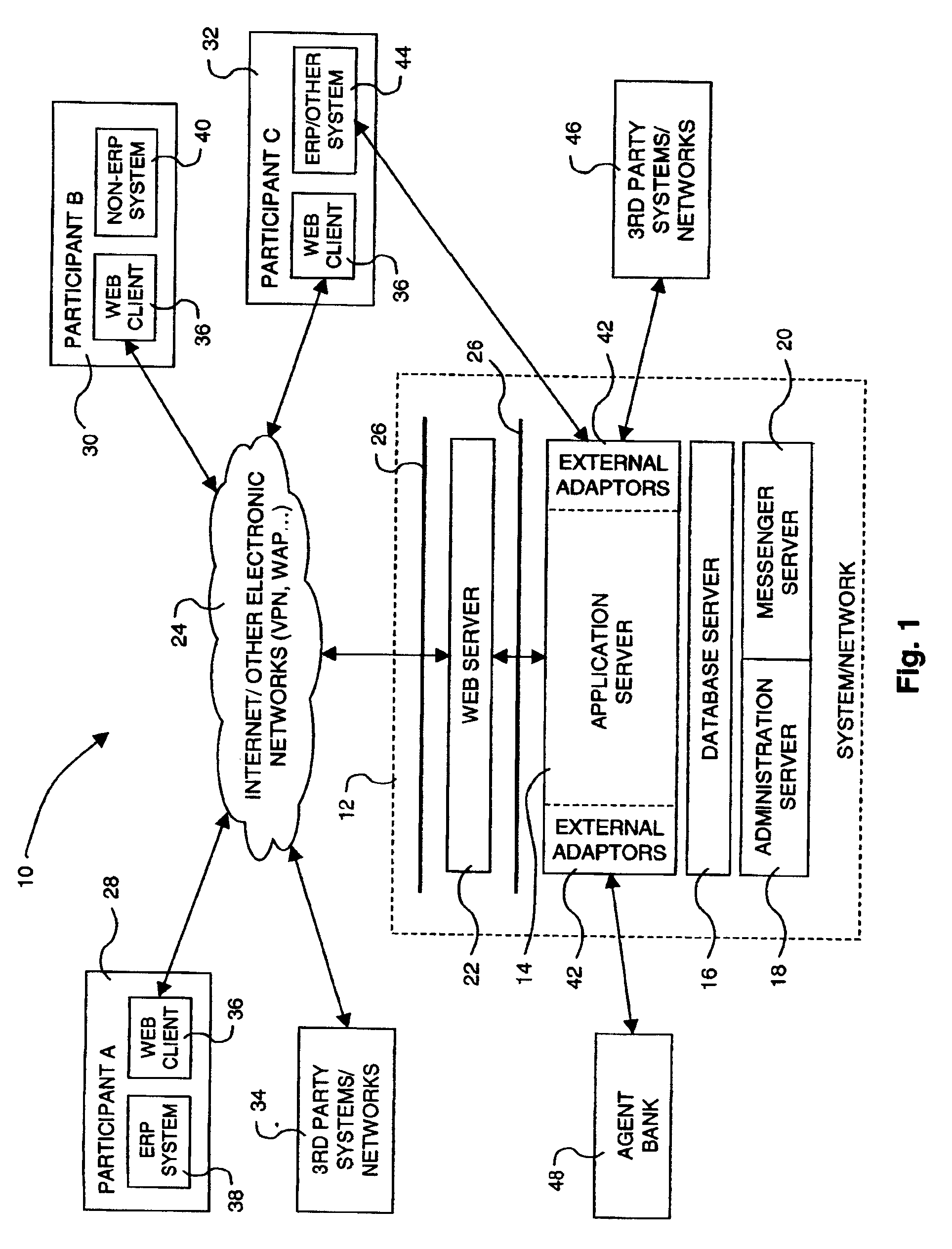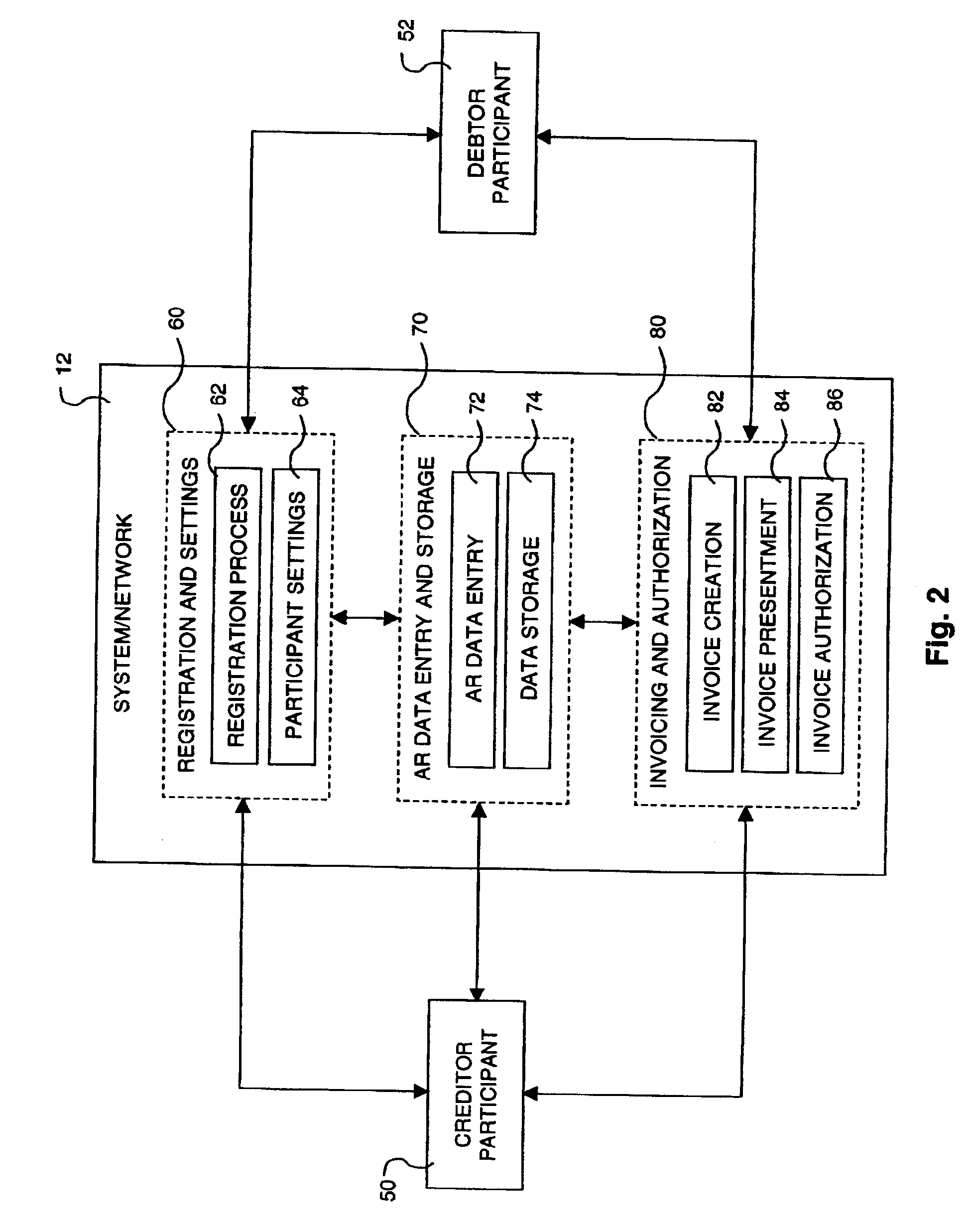Electronic multiparty accounts receivable and accounts payable system
a multi-party, electronic technology, applied in the field of multi-party accounts receivable and accounts payable system, can solve the problems of many limitations of the system and method currently available for facilitating settlement of transactions, the difficulty and cost of edi implementation, maintenance and use, and the inability to meet the needs of financial management, and achieves the effect of reducing working capital requirements, saving resources, and improving financial managemen
- Summary
- Abstract
- Description
- Claims
- Application Information
AI Technical Summary
Benefits of technology
Problems solved by technology
Method used
Image
Examples
Embodiment Construction
[0077] A. Background
[0078] In the following description, it is to be understood that following terms have the specific meaning as used herein: the term “participant” as used herein refers to a company using the present invention, while the term “user” refers to an employee (or an automatic system) of such company; the present invention allows for a participant to use both the accounts receivable features and accounts payable features simultaneously, corresponding to the selling and buying activities of the participant company, respectively. Therefore, the terms “debtor participant” and “creditor participant” as used herein are used instead of the equivalent “buyer” and “seller” to refer to the side of the transaction a participant has taken, rather than an absolute classification of the participant. Furthermore, since the present invention allows for one of the two companies of a transaction to not be a system participant of the present invention, the terms “debtor” and “creditor” ...
PUM
 Login to View More
Login to View More Abstract
Description
Claims
Application Information
 Login to View More
Login to View More - R&D
- Intellectual Property
- Life Sciences
- Materials
- Tech Scout
- Unparalleled Data Quality
- Higher Quality Content
- 60% Fewer Hallucinations
Browse by: Latest US Patents, China's latest patents, Technical Efficacy Thesaurus, Application Domain, Technology Topic, Popular Technical Reports.
© 2025 PatSnap. All rights reserved.Legal|Privacy policy|Modern Slavery Act Transparency Statement|Sitemap|About US| Contact US: help@patsnap.com



